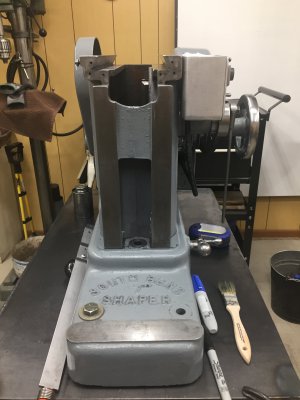I started scraping a SB shaper awhile ago. Teaching myself to scrape because I wanted to save this shaper. I have the ram scraped and wanted to move on to the next step, which is, I think, scraping the flat ways on the main column. The shaper has dovetail on ram/columns. So I first measured to see if the ram was moving out at a right angle to the vertical table ways on the column. I put a right angle straight edge against the ways (see photo) and used a DTI to measure along the straight edge. I had .003 of raise. I know I should leave .001 of raise in the ram shaper.
I’m embarrassed to say this, but I can’t seem to confidently figure out how much to scrape off the flat ways on the column to leave a rise of just.001. Not sure I’m figuring it out right, but the last photo shows the amount of material to be removed and locations I came up with. Am I anywhere near right?
Pete
I’m embarrassed to say this, but I can’t seem to confidently figure out how much to scrape off the flat ways on the column to leave a rise of just.001. Not sure I’m figuring it out right, but the last photo shows the amount of material to be removed and locations I came up with. Am I anywhere near right?
Pete





